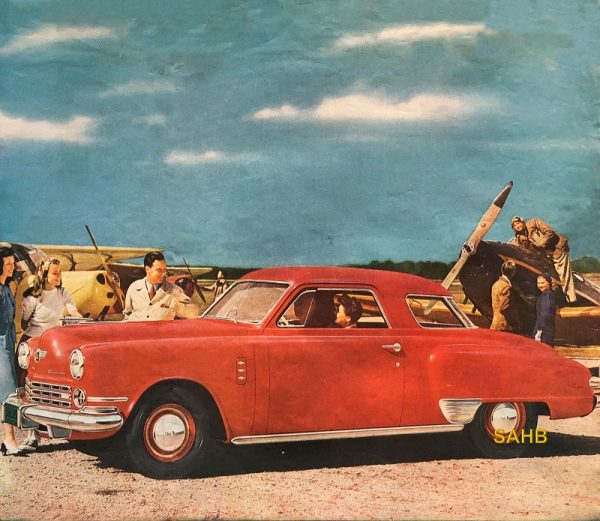
Introduced on 30 April 1946 at the Waldorf Astoria Hotel on Park Avenue in New York, the 1947 Studebaker was the first new postwar car from a major U.S. automaker. The company’s advertising used the tagline “First by far with a postwar car!” This was no idle boast. The rest of America’s manufacturers were still turning out mildly facelifted versions of their 1942 models into a seller’s market. Their new products would not be ready until the 1948 or 1949 model years.
The version in our Snapshot has the catchy model name of Studebaker Commander Regal De Luxe 5-Passenger Coupe – a title full of the optimism and dynamism of the immediate postwar era and backed up with appropriately positive advertising copy that referred to a war won and a workforce to be trusted – for example: “They’re brilliantly engineered – built to war production standards of accuracy by responsible, able craftsmen, many of whom are members of Studebaker’s unique father-and-son teams.”
The Commander seen here was the long wheelbase version (119 inches) and its junior sister was the Champion, with a 112-inch wheelbase. The distinctive wraparound rear window made the coupe look like nothing else on the road – but the four-door sedans were the biggest sellers. Both sedans and coupes had the modern integrated wings and horizontal grille that were advanced features for the time.
Who was responsible for this totally fresh, modern design? It was supposedly a joint effort between the famous industrial designer Raymond Loewy and the young Studebaker lead stylist Virgil Exner, but the two men were at loggerheads, the struggle being fuelled by engineering chief Roy Cole in an attempt to move Loewy aside. But there were others in the team, including Gordon Buehrig, John Reinhart, Bob Koto, Audrey Moore Hodges, Bob Bourke, and Vince Gardner. All of these would go on to have distinguished careers within the American auto industry.
Under the skin the power plants were not so advanced. They were reliable but undistinguished side-valve sixes of prewar origin. The Commander’s engine capacity was 226 cubic inches (3.7 litres) for an output of 94 horsepower, while the Champion sported only 170 cubic inches (2.8 litres) and 80 hp.
The 1948 and 1949 Studebakers displayed steady facelifts on the same 1947 design, but in 1950 came a more radical design announced as “The Next Look”, with the signature “bullet-nose” front and more pronounced rear fins. Demand for the new model exceeded Studebaker’s expectations and the plants in South Bend, Indiana (and Southern California and in Hamilton, Ontario) were all operating at full capacity, turning out a record 343,164 cars for the 1950 model year.
Image courtesy of The Richard Roberts Archive: www.richardrobertsarchive.org.uk







Leave a Comment